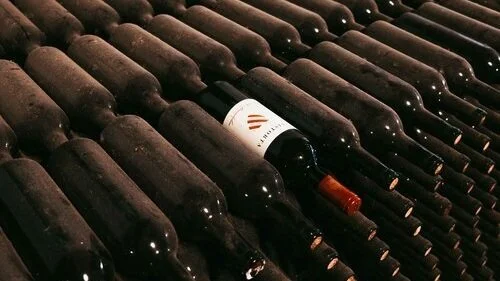Vistorta
ivy-covered buildings with charming green shutters…a beautiful barchessa with 20-foot arches…a smattering of colossal linden trees…
these are a few of the first impressions that await you upon entering the walled estate of vistorta in friuli-venezia giulia, italy.
i’m there on a monday morning to meet alessandra fadda, the export manager for vistorta winery and our tour guide for the day. an easy-going english speaker, she’s the perfect host for inquisitive american visitors such as myself.
they day kicks-off with a trip to the vineyards, and as we off-road into the fields in alessandra’s tiny car, she explains vistorta’s agricultural philosophy. everything is 100% organic, but i’m surprised to learn that the friulano, refosco and cabernet franc-producing vineyards take up only about 1/4 of their land; the rest is used for plants like soybeans, corn, wheat and spelt, designed to bring diversity to the soil.
we park on the edge of a very small plot of very old vines and pile out.
this particular little section of vineyard is called “ridiel” and it is special. ridiel’s ancient, carefully-tended vines yield rich black grapes that go on to become vistorta’s signature wine: the vistorta merlot. we had had a hot summer, so i wonder allowed how the aged plants held up to the heat.
“do you remember one year of your life to be exactly the same as the next?” alessandra asks us. “for wine, it is the same.”
she offers the analogy to explain how the vintage, or the year the grapes are harvested, produces different results time after time. variables like weather and sunlight affect the size and quality of grapes, so although ridiel always produces merlot berries, every harvest ends up tasting unique.
“it’s simple to understand, and easy to drink, but at the same time, has a world of things to say.”
after the vineyards, we head back to the main estate where we tour a large garden behind the owner’s villa. it’s lovely.
beautifully designed and pristinely maintained, the park is full of plants and trees from all over the world. from bamboo forests to an island of evergreens, its another example of the importance of biodiversity to the estate; with so many different types of vegetation, something is always in bloom, and essences are always in the air.
from the park, alessandra leads us to the barchessa, a common italian agricultural building primarily used for storage. and in the case of present-day vistorta, this, of course, means storage of wine.
walking into the ground floor of the barchessa, i feel the temperature drop a few degrees. it’s nothing dramatic, but it’s noticeable. as we wander down dark corridors lined with enormous wooden barrels and pyramids of dusty bottles, our guide explains that this is the perfect temperature and rate of humidity for aging wines.
frankly, it’s also just cool to see.
no tour is complete without a tasting, so as alessandra works open a bottle, i mentally prepare to finally try this famous vistorta merlot.
“see the hand holding the sword, just there?” she asks, pointing to the bottle’s neck label. “that means this family was a family of warriors.”
following her gesture, i peer down at an elaborate insignia, ornate and regal and printed in gold. it’s a mark with centuries of stories to tell: the original crest of the conte brandolini d’adda, the family who owns vistorta winery.
history claims that the brandolini family conquered the village of vistorta (as well as several surrounding towns) in a battle hundreds of years ago…and i could see that. with it’s stone-walled grounds, time-worn borgo storico and massive old trees, the estate has an air of age and character. it’s easy to look around and imagine 18th-century venetians huddled over fires in the courtyard, recovering after a hard-won war..
but those images evaporate as soon alessandra fills my glass. a simplified version of the crest may be on all their wine labels, but today, vistorta is a place of serenity, old-world italian grandeur and of course, really delicious wine.
be sure to sample…
vistorta merlot - the flagship wine is not to be missed. to understand alessandra’s point about vintages, perhaps a taste test between two or three different vintages would be a fun way to learn.
ramato pinot grigio - a nod to the way pinot grigio was sometimes produced in the past, this wine gets its beautiful coppery color from a longer period of maceration, or contact with the skins of the grapes. (skin contact is what gives wine its color.) the name “ramato” means “auburn” in english, and this is a fun wine to try alongside their typical pinot grigio.
the biscotti! since the estate produces many crops, you can also purchase other organic products like honey, grappa and even cookies in their shop.
